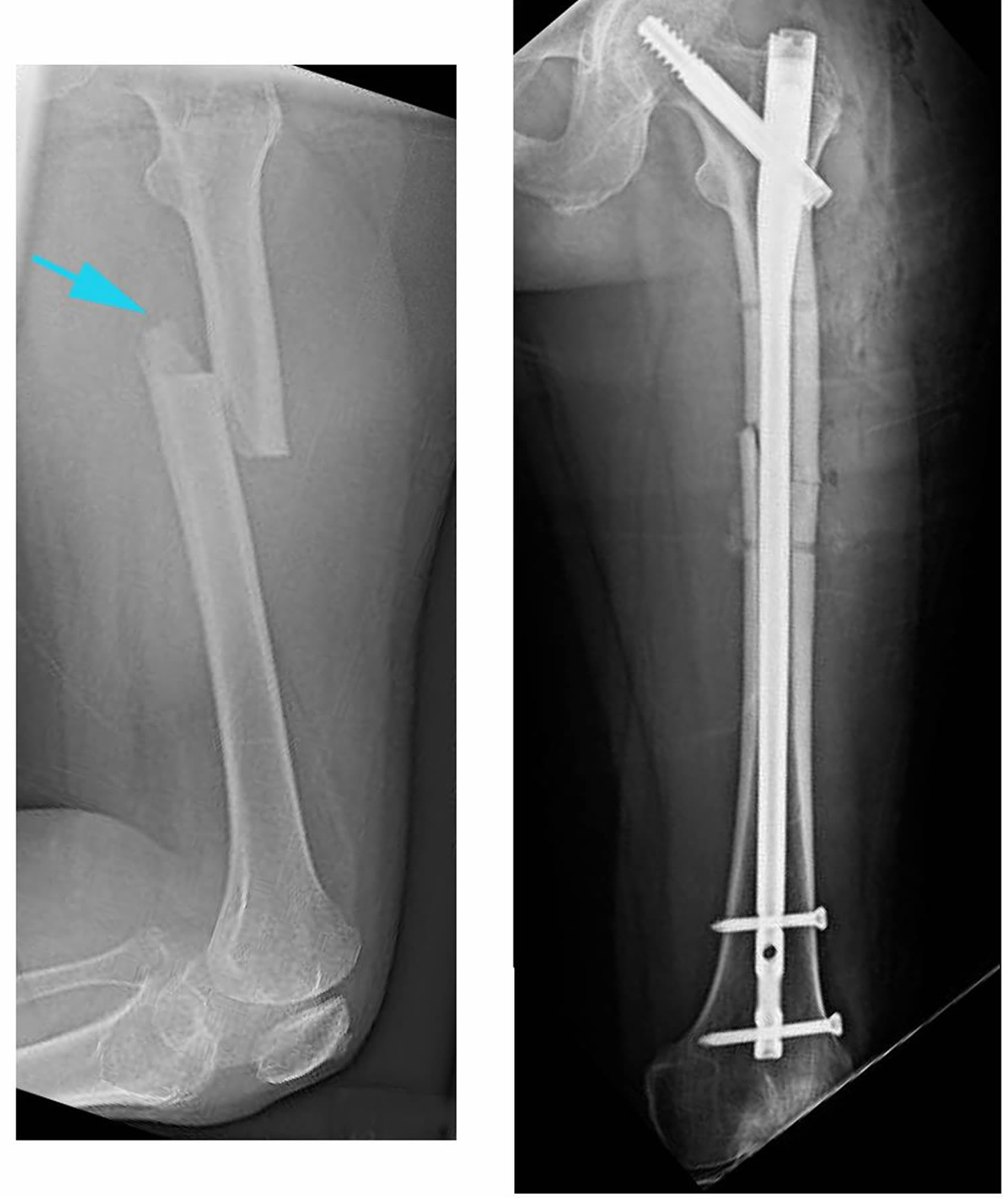

Compound femur break crack#
Non-displaced fracture: Occurs where there is a crack in the bone, but the bone hasn’t shifted out of place.An open fracture, also known as a compound fracture, is a relatively rare occurrence in children and happens when the bone breaks through the skin. A closed fracture happens when the bone is broken but hasn’t come out of the skin. Open vs closed fractures: Bone fractures are classified as either open or closed.What are the different types of fractures? Fractures also occur frequently in kids in the growth plates at the end of the tibia that is part of the ankle. Most commonly, the tibia breaks in the middle of the bone (which is called the tibial shaft), but the shin bone can face other types of fractures depending on the force of the injury. Tibial shaft fracture: The tibial shaft area refers the shin bone and the smaller fibula bone that make up the major bones in the lower leg.Most commonly femur fractures occur close to the knee through the growth plate since it is weaker than the bone. Femur fracture: Your femur bone is the largest bone in the body and connects the pelvis together to form the hip.A fracture can occur anywhere on the two bones that make up the forearm (called the radius and the ulna) Forearms: Forearm fractures are the most common type of fractures in children.Elbows: A common injury making up about 10% of fractures in kids, elbow fractures happen when a bone breaks at or near the elbow joint and can happen in one or more of the three bones that make up the elbow.Ankles: This typically occurs from a twist or fall from an activity like skateboarding, running, riding on a scooter or rollerblading.and can be reached by calling (804) 828-2467. Regardless of when they need to be seen, our same day orthopaedic clinic is open Monday through Friday from 8 a.m. If the child or adult heard a snap or grinding sound when the injury occurred, it is more likely to be a fracture, but not necessarily. Swelling with tenderness over the area involved.Some symptoms may seem obvious others may not. If your child has an extremity injury, there are a few ways to determine if they need to be seen immediately or if it can wait until later. Tendon and ligament injuries (sprains and strains) can occur in these areas as well, but do not occur as frequently in children. The upper extremities include the arms, elbows, wrists and fingers and the lower extremities include the legs, knees, ankles and feet.
Compound femur break how to#
How to tell if a bone is fractured or bruisedīroken bones are most common in the upper and lower extremities (limbs).


 0 kommentar(er)
0 kommentar(er)
